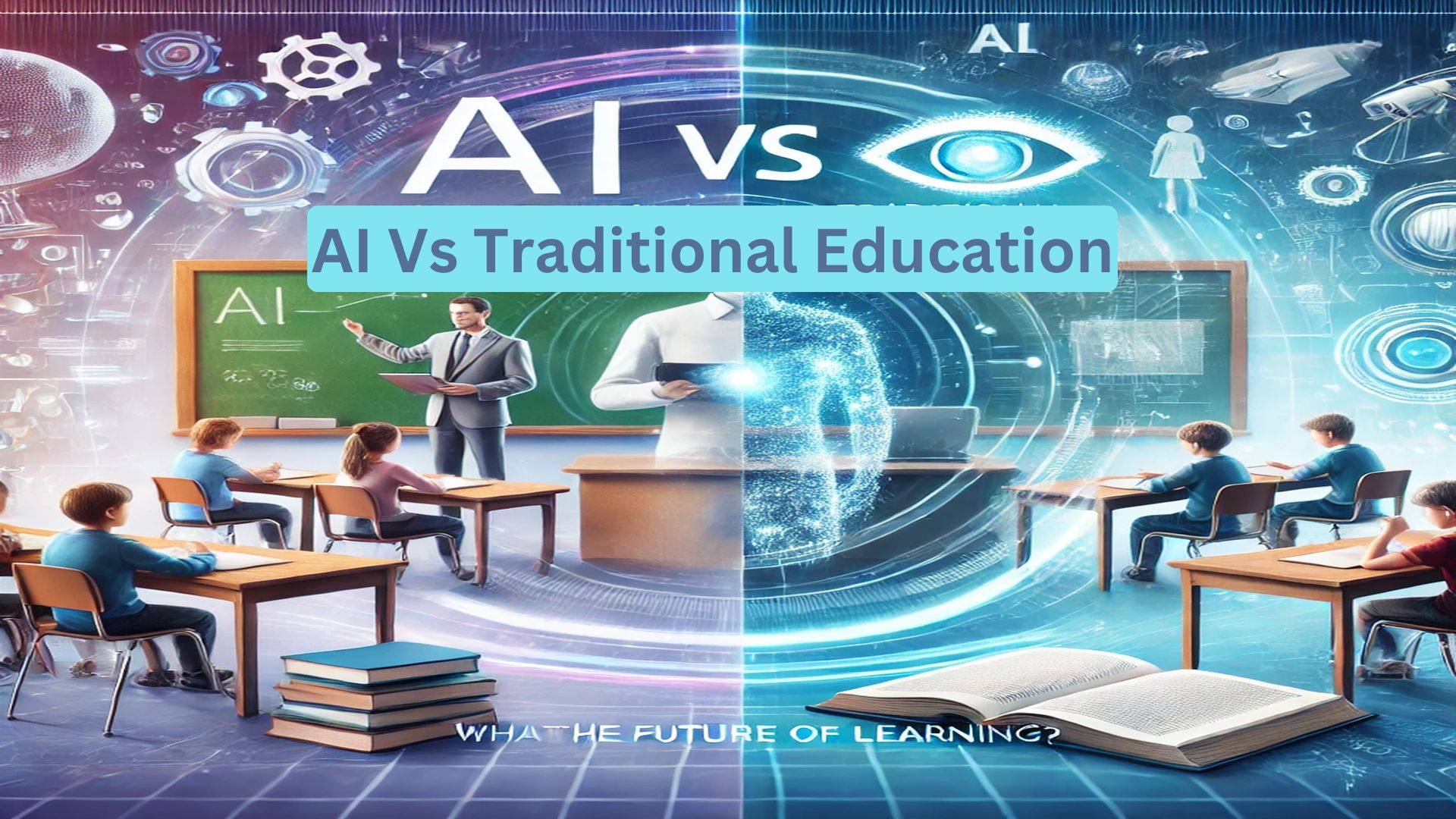Introduction Education has always been a cornerstone in shaping societies and empowering individuals. As we move further into the digital age, artificial intelligence (AI) has emerged as a transformative force, reshaping various industries, including education. This blog explores the comparison between AI-driven and traditional education systems, aiming to answer a critical question: How does AI compare to traditional education, and what does the future hold?
Traditional Education: A Time-Tested Model
Overview of Traditional Education
Traditional education is characterized by classroom-based learning led by human instructors and standardized curricula designed for large groups of students. This model has been the backbone of knowledge dissemination for centuries, relying on well-established methods that prioritize consistency and group instruction.
Strengths of Traditional Education
- In-person Interaction: Face-to-face learning fosters social skills, collaboration, and peer networking, which are difficult to replicate in virtual environments.
- Structured Environments: The disciplined routines of schools encourage time management, adherence to deadlines, and organizational skills that prepare students for professional environments.
- Credibility: Degrees and certifications from traditional institutions carry significant weight in the job market, providing learners with recognized qualifications.
Challenges in Traditional Education
- Limited Flexibility: Students must adhere to fixed schedules, which can hinder those who learn at different paces or have additional commitments.
- Resource-Intensive: Maintaining physical schools, hiring teachers, and providing materials require substantial investment, making it difficult for underfunded regions to offer quality education.
- Adaptation Issues: Traditional methods often struggle to keep up with the rapid pace of technological advancements, leaving gaps in tech-related skills and competencies.
For more insights into how learning methods are evolving, check out our detailed article on AI-Powered Learning.
AI in Education: A New Frontier
Introduction to AI in Education
AI-powered tools are revolutionizing the education sector by offering innovative solutions to traditional challenges. Examples include adaptive learning platforms that adjust content based on individual progress, virtual tutors available 24/7, and AI-driven assessments that eliminate grading biases.
Strengths of AI in Education
- Personalization: AI tailors learning experiences to individual students, accommodating diverse needs, abilities, and learning speeds.
- Real-Time Feedback: AI provides instant progress tracking and feedback, enabling learners to identify and address areas of improvement quickly.
- Cost-Effective Scalability: AI can deliver education to large and diverse populations without proportionally increasing costs, making quality education accessible worldwide.
Limitations of AI in Education
- Lack of Emotional Intelligence: AI cannot replicate the empathy and understanding provided by human teachers, which are crucial for addressing emotional or psychological challenges faced by students.
- Potential Biases: Algorithms may unintentionally reinforce biases present in their training data, leading to disparities in outcomes.
- Infrastructure Dependence: Reliable access to digital tools and connectivity is essential for AI’s effectiveness, leaving underprivileged communities at a disadvantage.
Learn more about the impact of AI on personalized education in AI Adaptive Learning Revolutionizing Personalized Education and Training.
Comparing AI and Traditional Education
Personalization vs Standardization
AI excels in creating personalized learning paths by analyzing individual performance and adapting content accordingly. Traditional education, in contrast, relies on standardized methods designed for mass instruction, which may not cater to unique learning needs.
Flexibility and Accessibility
AI allows learning anytime and anywhere, breaking geographical and time constraints. This flexibility is particularly beneficial for working professionals and remote learners. Traditional systems, however, depend on physical presence, limiting accessibility for students in rural or underserved areas.
Human Interaction and Emotional Support
While traditional education benefits from teacher-student relationships that foster trust and mentorship, AI lacks the emotional intelligence required to understand and address students’ emotional needs, which are integral to holistic development.
Scalability and Cost
AI can scale education delivery efficiently, making it accessible to a larger audience at lower costs. Expanding traditional education infrastructure, however, is expensive and time-consuming, often requiring significant investments in physical facilities and staffing.
Hybrid Models: The Best of Both Worlds
Blended Learning Approaches
Hybrid models combine AI tools with traditional teaching methods to enhance learning outcomes. For instance, teachers can use AI for personalized homework assignments while focusing on interactive discussions during classroom sessions.
Case Studies and Examples
- Schools: Some institutions use AI to identify struggling students and provide tailored interventions, improving overall performance.
- Universities: Universities are adopting AI for administrative tasks like enrollment and scheduling, freeing educators to focus on student engagement and research.
Potential Benefits
- Enhanced Learning Outcomes: Combining the strengths of both approaches leads to a more effective education system that caters to diverse needs.
- Cost-Effective Solutions: Hybrid models reduce the financial burden on educational institutions while maintaining quality.
For further discussion on this balance, explore our blog on AI for Personalized Learning in the Digital Age.
Challenges and Ethical Considerations
Equity in Access
To ensure inclusivity, AI tools must be accessible to students from all socio-economic backgrounds. Policymakers and tech developers must collaborate to bridge the digital divide.
Privacy Concerns
Protecting student data and ensuring ethical use of AI are critical in AI-powered education systems. Transparent policies and robust security measures are essential.
Teacher Roles in AI-Era Education
Teachers will need to adapt by reskilling and embracing AI tools to complement their teaching practices. This shift will redefine their roles, focusing more on mentorship and less on routine tasks.
The Future of Learning
Emerging Trends
Innovations like gamification, AR/VR, and lifelong learning platforms are redefining educational experiences, making learning more engaging and interactive.
Predicted Impact
The future of education is moving towards skill-based, lifelong learning systems that emphasize adaptability, critical thinking, and on-demand access. These models will likely replace rigid degree structures with flexible, modular certifications.
Role of Policymakers and Educators
Policies must support the integration of AI in education while addressing ethical, equity, and infrastructural challenges. Collaboration between governments, educational institutions, and tech companies will be key to shaping a sustainable future.
Conclusion As AI and traditional education systems evolve, hybrid models are poised to offer the best of both worlds. These approaches can combine the personalized, scalable benefits of AI with the social and emotional support of traditional methods.

